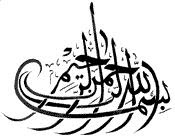Publication :
NSUNT
Edition :
2*
Date :
03/09/2000
Page Number :
41
Headline :
These cars are not a drag!
Words :
850
Byline :
By Radzi Sapiee
Text :
THERE was no mistaking the sound. The loud growl of the 8.5 litre V8 2,000 horsepower drag car engine could be heard, even from the far end of the dining tables of the air-conditioned hospitality suites at the paddock building above the pits at the Sepang F1 Circuit.
The distinctive sound made avid motorsports fans in one of the suites rush towards the glass window, even though Finance Minister Tun Daim Zainuddin was still in the suite giving out the prizes for the Silverstone Merdeka Millenium Endurance 12-hour race.
The crew members and some of the racers who were resting after the gruelling long drawn race ran from behind their pits to be as close to the 1km-long straight as possible, knowing there's a spectacle in store. And true enough, it was a sight to behold.
The first drag car, yellow with huge rear wheels, zoomed off past the straight to a top speed of 340kph before two parachutes sprung out from behind to slow it down to a more managable speed. That whole run took only seven seconds.
The second car, longer and black, had the fans screaming more as thick smoke billowed out to tickle their fancy but unfortunately, it didn't get to top speed as it veered a metre or two to the right.
"The track was slightly slippery. So I had to take my foot off the pedals," said the Australian driver Dean McClennan. The cars can accelerate 0-100kmh in one second, twice faster than the most powerful Formula One car and McClennan is not taking any chances.
According to the more experienced first driver John Payne who is also from Australia, the straight at Sepang is not exactly level and if a car starts veering off, it could just crash into the sides. Nevertheless, the cars and the drivers who were specially brought from Brisbane, Australia to impress the local crowd coming for the inaugural 12-hour race have done their job.
Earlier, on the eve of Merdeka Day, they have made two sets of two runs each and the second, held in front of a crowd of 25,000 really got them going as the sparks coming out from the wheels can be clearly seen in the night.
Two drag cars, dubbed the "Funnycars" by the drivers due to its closeness to streetcars but slightly odd shape were shipped from Brisbane to Malaysia for the show and Zaifa chief executive officer Zainal Osman Mohamed who paid the bill of RM100,000 said it was a prelude to start drag racing here.
The original plan was to let the two cars race each other like in any drag race but this cannot be done due to the slightly lopsided Sepang straight.
"We also normally use a special glue compound poured on the track to get the best traction but obviously we can't do that here," said the 48-year-old Payne who have 25 years of drag racing under his belt.
Their engineer David Blee said even then, the cars they used were second-grade in the world of drag racing.
"The best ones churn out 6,000 to 7,000 horsepower and can reach a top speed of 510kp from a stand-still in just four seconds!" he said.
Both types use rocket fuel - methanol for second-grade and nitro for the top notch. An F1 car, on the other hand, spews out 800 horsepower using normal but advanced petrol that is intended to reach average road-users later.
But that doesn't mean that drag racing is expensive. Rob Oberg who puts the show together said the cars cost only RM100,000 each.
"The engines cost RM80,000 each. We have workshops specialising in making such engines in Australia and put the rest together by our selves either using locally-made parts or those from America where drag racing is huge," he added.
This is peanuts compared to the cost of an F1 car and that is why Oberg reckons it could catch on in Malaysia especially among the youngsters.
"The idea in drag is to race two speed machines, even a normal motorbike along a straight. If one machine is less powerful, we could introduce a handicap by allowing it to start a few seconds ahead," he added.
He said, off-street drag racing was encouraged by the Australian police who wanted the young to get their kicks at the right places.
"We could start with souped-up normal cars before moving to the supercharged ones. In time, Malaysian workshops could even make their own methanol or nitro-ran engines or acquire it from overseas," he added.
For the record, drag cars are the fastest machines on earth and only slower than the sub-rocket machines that are used to break world land-speed records.
Although the Sepang show provides only a sample of it, given the response, there's no doubt that many would want to get involved and given the relatively low cost, drag racing could have just firmly planted one foot in Malaysia.
(END)








